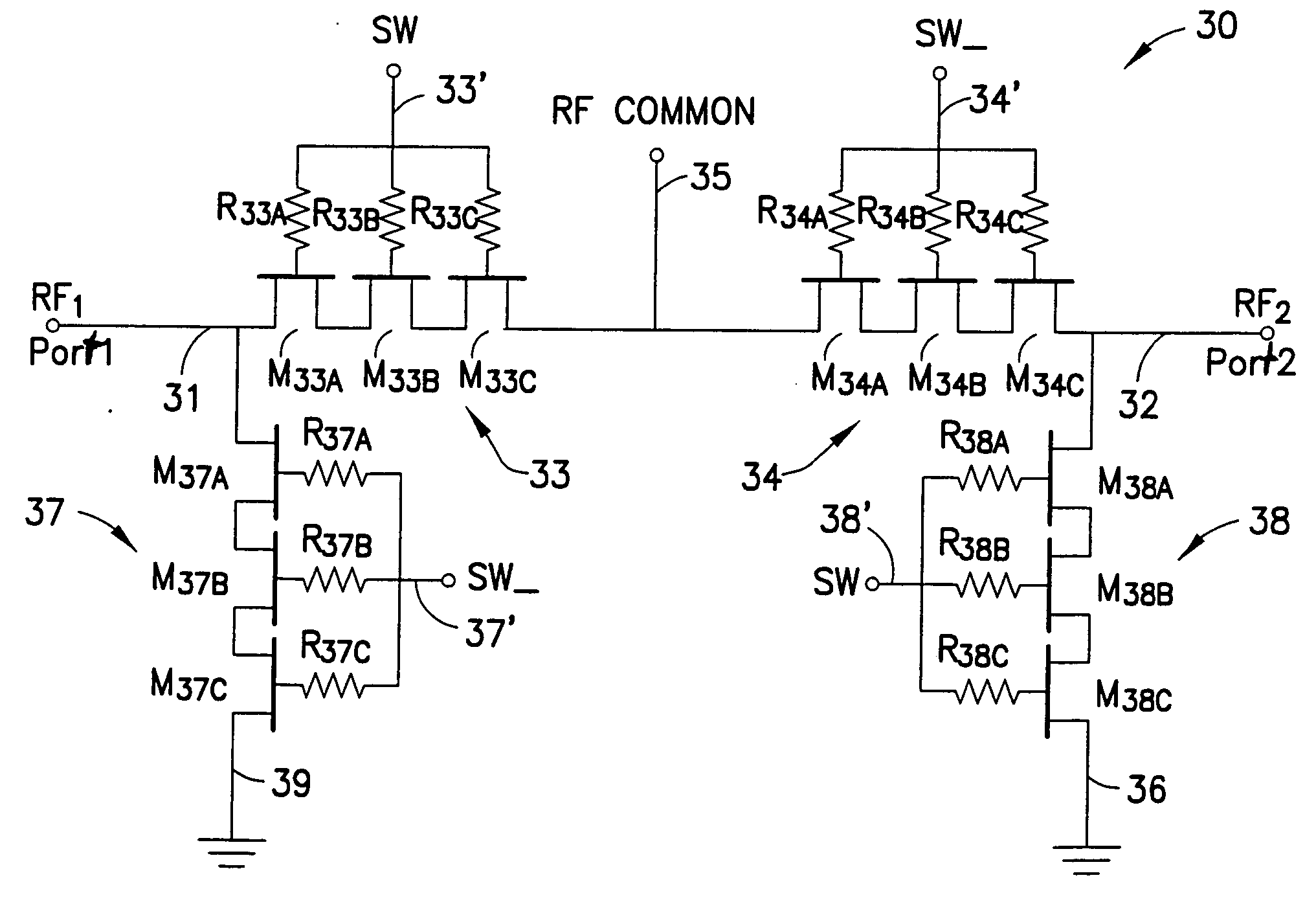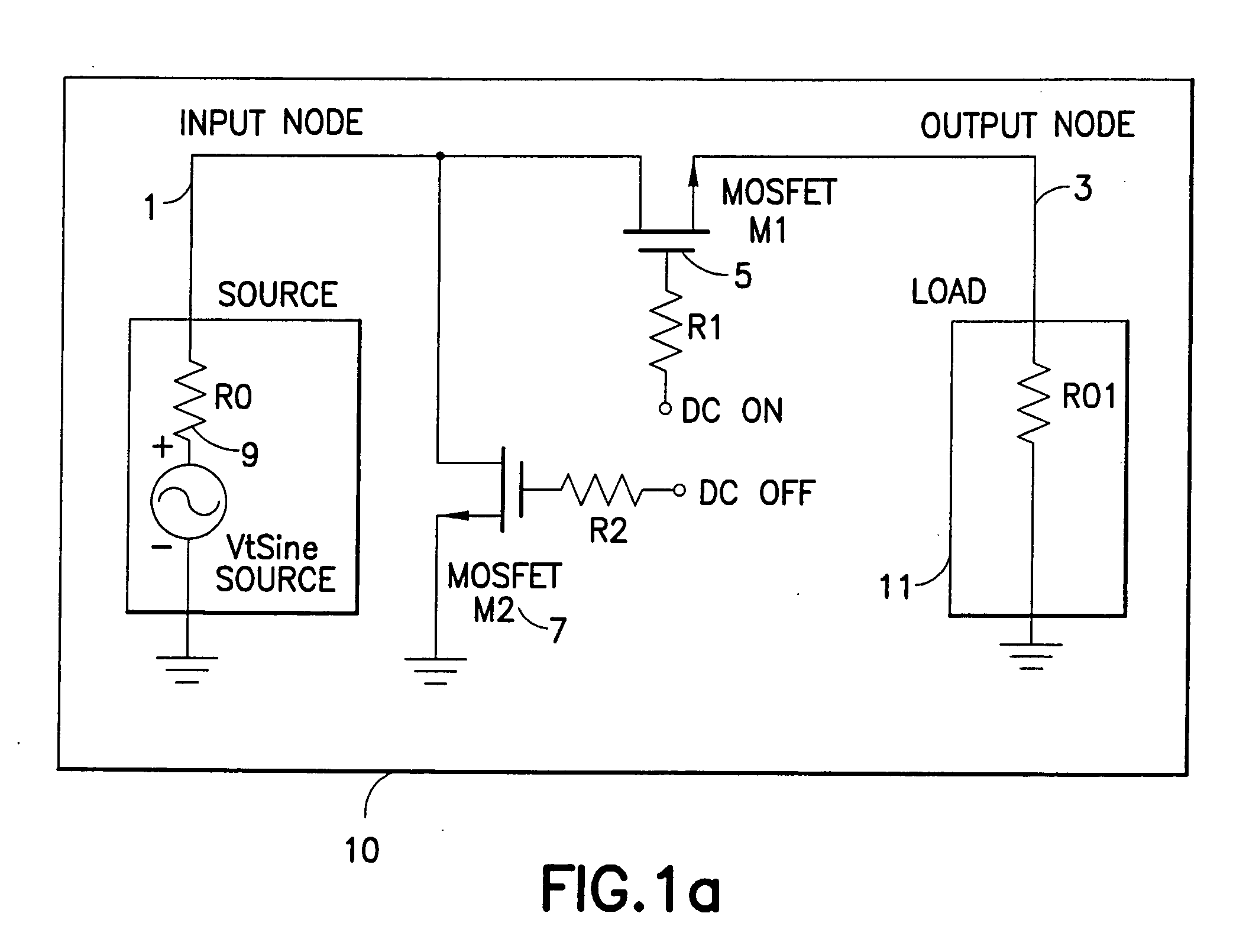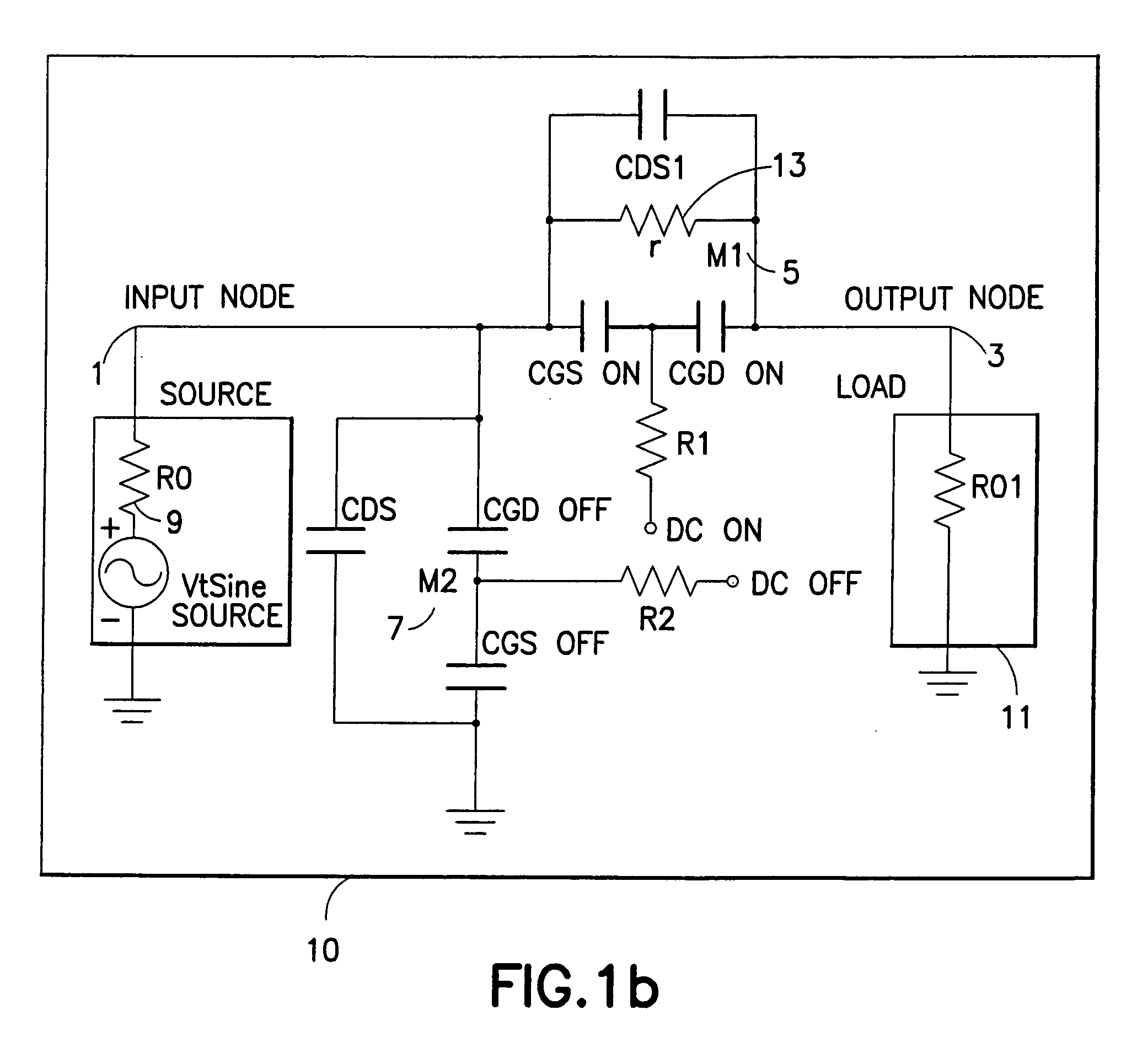Switch circuit and method of switching radio frequency signals
a switch circuit and radio frequency technology, applied in the field of switches, can solve the problems of first type of compression, undesirable input signal feedthrough, loss of power, etc., and achieve the effect of improving the isolation and increasing the compression point of the rf switch
- Summary
- Abstract
- Description
- Claims
- Application Information
AI Technical Summary
Benefits of technology
Problems solved by technology
Method used
Image
Examples
first embodiment
[0073] Negative Voltage Generator#Charge Pump#A First Embodiment
[0074] As shown in FIG. 4, one embodiment of the fully integrated RF switch 100 includes a negative voltage generator or charge pump 120. The negative voltage generator 120 generates the negative power supply voltage (specified hereafter as “−Vdd”) required by other circuits of the fully integrated RF switch 100. Two sets of inputs are provided to the negative voltage generator 120: a positive DC power supply voltage signal (Vdd) 122; and a clocking input (shown in the figure as a single input signal, “Clk”) 124. Although the clocking input 124 is shown as a single input signal in FIG. 4, as described below with reference to FIG. 5b, in some embodiments of the present inventive RF switch, the clocking input 124 may comprise two or more clock input signals.
[0075] In addition, in the embodiment shown in FIG. 4, the positive supply voltage that is input to the negative voltage generator circuit 120 comprises a 3 VDC power...
embodiment 400
[0119]FIGS. 11a and 11b show an alternative embodiment 400′ of the two-stage level shifter and RF buffer circuit 400 described above with reference to FIG. 8a. The alternative embodiment of the RF buffer shown in FIG. 11b uses the voltage divider circuit described above to assure that voltages on the gate oxides of the RF buffer never exceed greater than 0.9 volts above Vdd. As shown in FIG. 11b, the alternative two-stage level shifter and RF buffer circuit 400′ includes a first stage level shifter circuit 600 coupled to a second stage RF buffer circuit 402′. In this embodiment of the level shifter and RF buffer circuit 400′, the modified level shifter outputs, “out_pos” and “out_neg”, described above with reference to FIG. 10, are used as input to the RF buffer inverters to generate the RF buffer output signals “out” and “out_”. For example, as shown in FIG. 11b, the “out_pos” and “out neg” output signals generated by a first modified level shifter 700 are input to two RF buffer in...
PUM
 Login to View More
Login to View More Abstract
Description
Claims
Application Information
 Login to View More
Login to View More - R&D
- Intellectual Property
- Life Sciences
- Materials
- Tech Scout
- Unparalleled Data Quality
- Higher Quality Content
- 60% Fewer Hallucinations
Browse by: Latest US Patents, China's latest patents, Technical Efficacy Thesaurus, Application Domain, Technology Topic, Popular Technical Reports.
© 2025 PatSnap. All rights reserved.Legal|Privacy policy|Modern Slavery Act Transparency Statement|Sitemap|About US| Contact US: help@patsnap.com



